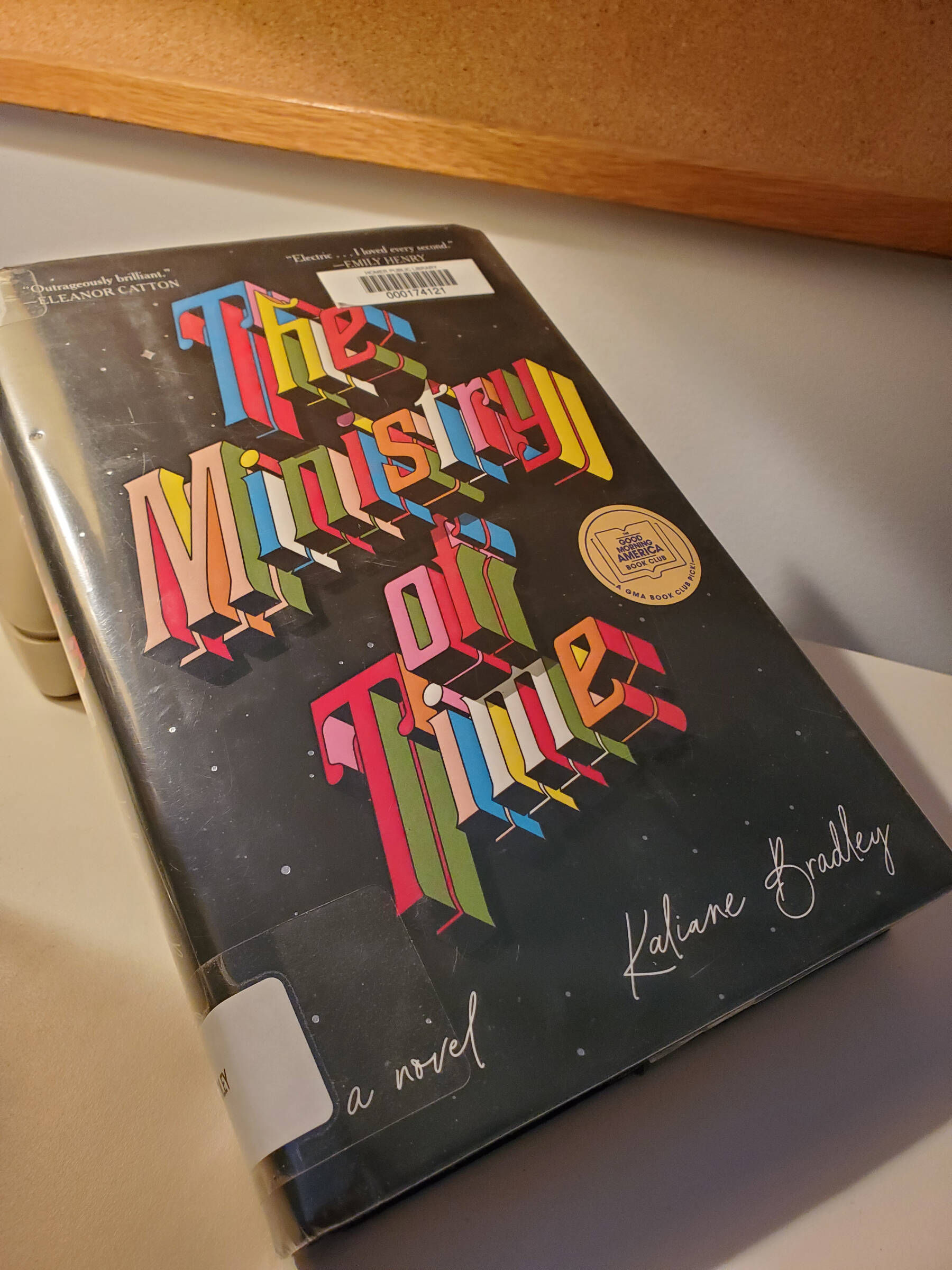This column has been coming for a while now, but I’ve been thinking about how exactly to present Kaliane Bradley’s “The Ministry of Time.”
Bradley’s novel is a work of contemporary fiction that combines both history and speculative writing. When I picked it up I mainly expected a fun, action-filled adventure with some commentary on one of the greatest Arctic-based disasters — I mean, endeavours — that occurred during the golden age of Arctic exploration in the 19th century. This book is that, but it also is a deeply emotional inquiry into human emotion and connection, particularly when time and space and identity arise as barriers that must be overcome.
The title should be a giveaway — the novel does, in fact, revolve around the establishment of a Ministry of Time. The protagonist, an unnamed British civil servant who previously worked as a translator-consultant in the Languages department of the Ministry of Defence, takes a new, high security level job working with what she is told are refugees, or “expats.” In a rather unceremonious moment, she is told by the Ministry of Time’s vice secretary that these expats are actually refugees from history, and that Britain has obtained time travel.
There are five expats that survive the trip through the time door to the present day: a lieutenant extracted from the Battle of Naseby, which occurred during the First English Civil War, in 1645; a young woman taken from the Great Plague of London in 1665; another woman pulled from the French Revolution in 1793; a captain extracted from the Battle of the Somme, during World War I, in 1916; and our secondary protagonist, Royal Navy Commander Graham Gore, who served as one of the commanding officers on Franklin’s last, tragic expedition to the Arctic in search of the Northwest Passage. Gore was extracted from 1847, approximately a year before the remaining crew members of the Terror and Erebus abandoned their ships and eventually perished.
Each expat is assigned a “bridge,” a Ministry employee who lives with, guides and educates, and monitors them as they adjust to the modern world. Though the expats were chosen and extracted from history because they were expected to die in their own time anyway, the time travel technology — and the Ministry itself — is still very new, and no one yet knows the repercussions, physically or psychologically, that the extraction process will inflict on people. Our narrator — a British Cambodian woman whose own mother was a refugee, not that she’d call herself that — is assigned as Gore’s bridge.
In a flashback to the time her mother took her and her sister on a trip to Cambodia, and they find the ruined remnants of the family holiday home, the narrator thinks, “When something changes you constitutionally, you say: ‘The earth moved.’ But the earth stays the same. It’s your relationship with the ground that shifts.”
She observes, as she observes Gore, that the time-travel project they are both a part of — and the predicament that it places them in — is particularly unique. But, “the rhythms of loss and asylum, exodus and loneliness, roll like floods across human history. I’d seen it happen around my own life.”
Here, then, comes the complicated part — Gore is essentially a guinea pig, certainly a displaced person, but it could also be argued that the Ministry has, in a way, saved him, as he would have died in the Arctic, either on the ice-gripped ships or on the final, fatal march to the Canadian mainland. He’s like a child in the modern world — when the narrator explains airplanes to him, calling them “ships of the sky,” and says that a flight from London to New York takes about eight hours — an unfathomable speed of travel to a man from “the dusk of the Age of Sail” — Gore nearly cannot process it. Yet he’s not at all a child, or helpless, or misunderstanding. He’s a capable, “entirely realized person” who is now being made into someone else’s science experiment.
And so the questions of identity and place, of time and space as boundaries and how, through this probably-highly-immoral-government-sanctioned project, paths between or through those boundaries might be traversed.
With the past thrown together with the present, both Gore and the bridge are forced to grapple with their own identities as displaced persons and must determine what the future will be — both their own, and the world’s at large, as more of the truth behind the Ministry’s purpose and history is gradually brought to light. Both must also navigate the pitfalls of being people from different cultures and eras shoved into a live-in situationship, being the monitor/monitored and — rather inevitably — being romantically involved, when that last one certainly was not Ministry sanctioned.
A short note about this novel being “action-filled” — I highly recommend this novel for a number of reasons, but if you enjoy sci-fi adventure stories or spy thrillers, then this should be right up your alley. I’ll leave it there, so as not to further spoil the fun.
“The Ministry of Time” was published by Avid Reader Press in 2024, and is available for check-out at the Homer Public Library as part of their 2025 Lit Lineup.

